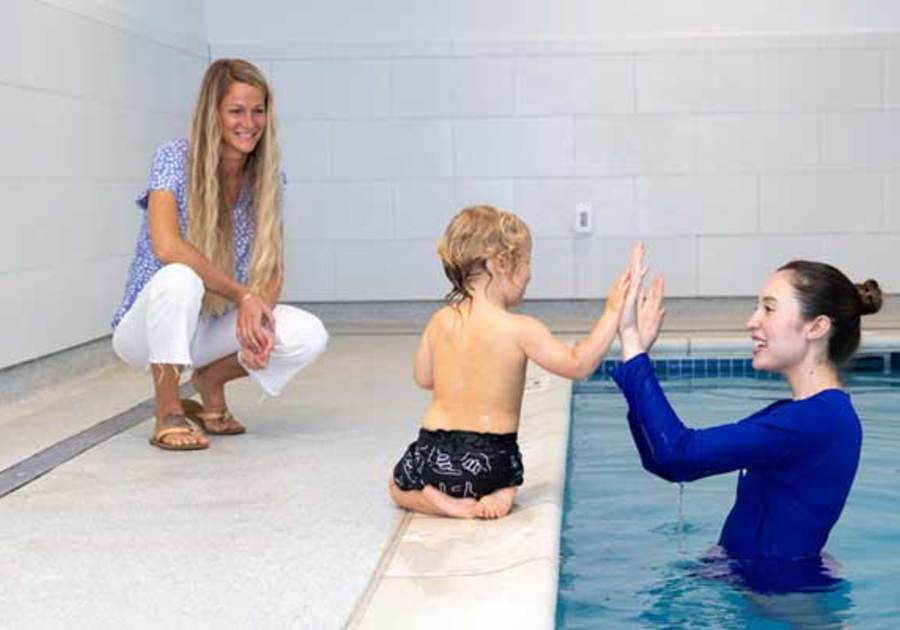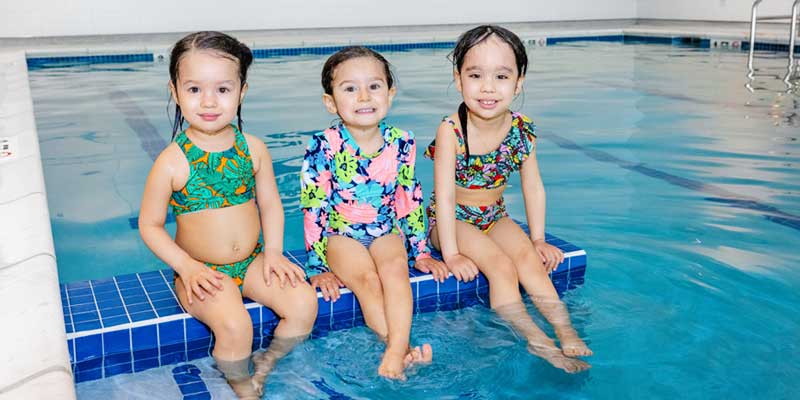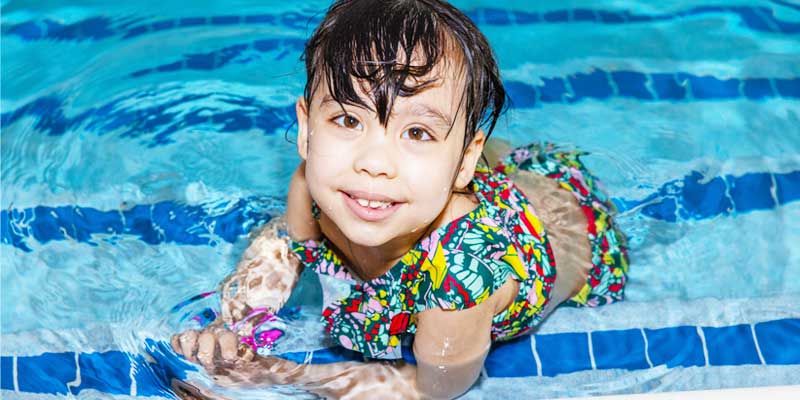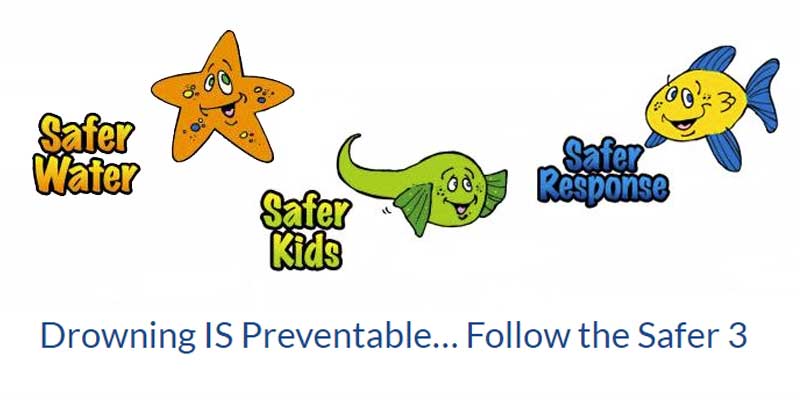Drowning is the number one cause of death for children under 4 in the US today. Learning about water safety is an important step to keep your child safe.
That’s why we’ve put together a water safety checklist to help you and your family have fun in the sun all summer long.
Swim Safety Checklist for Parents
1. Review water safety with your kids.
Going over basic water safety with your kids ensures they understand what to do in a crisis. Reviewing what they learned in swim class before they get into a pool is a good habit to create.
Children should also know how to call 911 in case of an emergency.
2. Install or check for proper barriers.
Whether it's the pool or spa at your hotel or a neighbor's pool during a barbecue, always make sure proper barriers are in good condition.
Barriers include gates, fences, or other safety barricades that stop your kids from getting into a pool without you knowing.
3. Designate a "Water Watcher."
When everyone is watching, no one is watching. Designate an adult to keep their eyes on the water and swimmers. Even if there is a lifeguard on duty, two sets of eyes are better than one.
Try splitting up watch times with a designated water watcher. Each parent can take turns being the watcher to make it easier and safer for everyone.
The designated water watcher should be able to swim, know pool safety rules, and perform CPR.
4. Take regular swim breaks.
Kids often don’t know their own limits. Reminders to take a break from the water for a few minutes are a good thing.
This is especially the case if you’re swimming in the ocean. Resting out of the water can allow your kids to save their energy and muscle function. If they swim for long periods of time, they may get worn out.
5. Avoid cloudy water.
When swimming in a public pool, be cautious if you see cloudy water. Cloudy water in public pools often means there is an imbalance of chlorine.
Low chlorine levels also mean the pool may not be clean and filtered properly. If you see cloudy water in any pools, it may be best to avoid them.
6. Know the water depth.
Water depth versus the height of a swimmer is especially important to keep in mind when swimming in unfamiliar places. Young children are likely to follow you or an older child into the water not knowing how deep it is.
7. Remember this lifesaving saying, "Reach or Throw- Do Not Go!"
Do not jump in and try to save someone. Have something nearby that you can use to rescue.
8. Only Use Coast Guard-approved flotation devices.
Did you know there are many flotation devices that are not approved by the United States Coast Guard? One of them being the popular “arm floaties”.
Arm floaties are notorious for being unpredictable. They can easily deflate, shift position, or come undone.
Instead of floaties, try using a life jacket that zips up and buckles. An ideal safety jacket will keep your kids from going underwater and their heads upright.
Using a Coast Guard-approved flotation device is best for the safety of your children.
Top Benefits of Swim Lessons for Summer
“Drowning doesn’t happen as it appears on tv…it’s silent and surreal. You may look in the pool and see someone under the water and not know they are struggling. Keep in mind they are not going to yell for help and wave their arms. They are going to sink down under the water silently” Joe Oehme, Njswim Founder.
Njswim is aligned with Stop Drowning Now and the Safer 3 Water Safety Program which brings awareness to water safety education and aims to reduce the number of drowning incidents.
The Safer 3 curriculum helps families recognize risks and respond to emergencies. It teaches how safer water, safer kids, and a safer response are essential to water safety.
Safer Water
On average, ten people drown every day. And simply put, the best way to stop drowning now is to teach your kids how to swim.
At Njswim, we make water safety education our priority. Drowning is preventable if the right resources are provided to reduce risks.
Safer Kids
The leading cause of drowning for children is panic. Teaching your kids what to do in an emergency can decrease their chances of panicking.
Putting your kids in swim lessons allows them to understand basic water safety. Starting your child in Water Babies and continuing through a swim lesson program will provide them with skills and you with peace of mind.
Safer Response
At Njswim, our instructors teach kids of all ages and skill levels how to be partners in water safety. Swim lessons increase the safety of your kids if they find themselves in an unfamiliar situation.
Any parent knows that children around water can often be stressful. But having confidence in your kids’ swimming abilities can calm those water stressors down.
Njswim offers quality year-round swim lessons throughout NJ for all ages and abilities. Our developmental classes begin as early as three months old and advance all the way to stroke mechanics and swim team prep.
We understand that every child is different and take a gentle approach in our swimming lessons.
Warm water and small classes provide a safe and unique learning experience.
350 Sparta Avenue
Sparta, NJ 07871
(973) 726-7226








